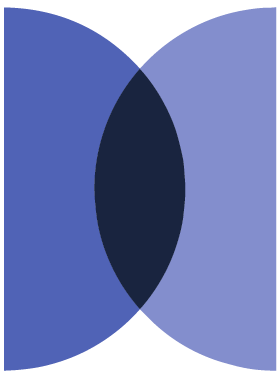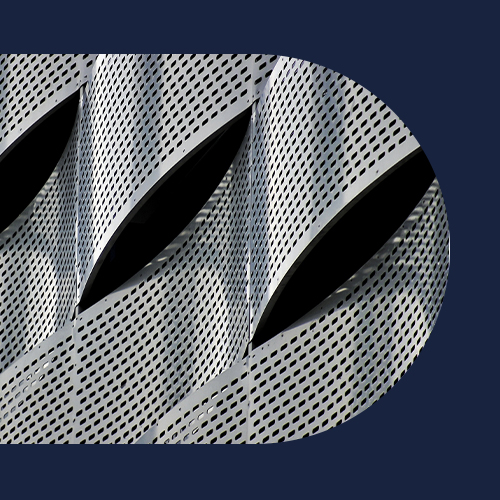The 8 key performance indicators of a hotel
ROI, REVPAR, REVPAC… These are all metric indicators used in calculations regarding profitability and forecasts concerning your hotel. As a hotel manager, you are probably already aware of these terms.

These are also often called “performance indicators”. However, some of the more complex aspects of these indicators may remain unclear.
Although your hotel management software remains a vital ally when it comes to collecting information for data calculations, it is also useful to be aware of how these calculations are carried out in order to use the results to make adequate decisions and to efficiently analyze a given situation. Here are the eight key metric indicators that a competent hotel manager should know.
Occupancy
Your hotel’s occupancy represents the percentage of occupied rooms relative to the number of rooms available in your hotel. Thus, if your hotel has 100 rooms and 65 of them are occupied, then your occupancy is 65%. This data is particularly relevant, as it allows you to precisely analyze your hotel’s current situation and to see which elements are attracting clients to book at any given time.
This idea can also be useful to you in terms of your hotel organization. It can provide you with some forecast data in many different departments. When you reach high occupancy, it is important that each service you provide meets your clients’ expectations. Occupancy has a significant influence on your human resource needs. It is thus essential to have a wide panorama of your occupancy in order to ensure that in periods of high occupancy, each department has enough employees to maintain a standard level of services.
By knowing how to compute your occupancy rate, you can access and utilize an analytic element in relation to your hotel’s profitability. Your occupancy can vary depending on a number of different factors, such as your room rates. For example, if your rates are low, you might have a high occupancy, but this does not necessarily equal optimal profitability. In other circumstances, your occupancy alone can be of very small significance when indicating your performance. For example, if you have a high occupancy, you will probably need to hire more staff, for housekeeping amongst others, which will inevitably have a negative impact on your profitability.
ADR
ADR (average daily rate) is your rooms’ average daily rate. It is computed by adding the rates of all your occupied rooms, and then dividing this sum by the number of occupied rooms. This indicator is interesting to look at, especially in order to compare your current average daily rate to that of the previous year. You can also analyze the impact of your mean ADR on your occupancy.
The ADR will provide you with some ideas and possibilities concerning your occupancy. It is obvious that the more you want a high ADR, the bigger the challenge for high occupancy will be and vice versa. It is by your pricing policy that you can find the right equilibrium between ADR and occupancy in order to maximize your income. Thus, the question becomes: Could I have had a better ADR with the same occupancy?
If you are able to offer some discounts, your ADR will be directly affected, as discounts often influence room rates. This is why it is essential to be aware of each discount and event happening at your hotel. With this knowledge you will be not be surprised by a considerable ADR gap between the current and previous year.
REVPAC
The REVPAC metric indicator (revenue per available customer) represents the total revenue generated by a single customer. The REVPAC is computed by taking the total revenue generated by all the customers and then dividing that sum by the total number of customers staying at your hotel. This computation yields the average revenue per hotel guest. This is useful when it comes to making predictions according to your occupancy and time of year. The REVPAC is often an easily improved element as it acts on clients that are already staying at your hotel. A small number of actions can be taken in order for to generate additional revenue. Why not offer a superior room (upsell) upon your client’s arrival for a small additional fee? Offering a superior room can have a wide variety of outcomes. First, your client will be pleased as they will believe they benefited from an advantageous rate. Then, the standard and vacant room will be available for another client who may want to book the room at a lower price.
Improving your REVPAC is an overall goal that can be taken into consideration by all the different departments in your hotel. You might want to include other hotel amenities, for example, bringing a bottle of wine from the hotel bar to the room (crossell), or other options, when you give your clients the opportunity to enjoy the experiences offered by your hotel. The front desk plays a key role given that it will present to your clients all the different available offerings, such as early check-in or late check-out.
If you fail to improve your REVPAC, you need to keep in mind that you can still act on a number of factors in your hotel, and that, sometimes, you just need to remind your staff of the numerous different sales opportunities your hotel offers.
REVPAR
The REVPAR (revenue per available room) is another key performance indicators. This means that a particular room can be rented during the observed period of time. This metric indicator is computed by multiplying the ADR by occupancy. It is used to determine the average rate displayed for the available rooms. Let’s take an example over a month: If, during one month, you rented your rooms at an average rate of $100 and your monthly occupancy was 75%, then your revenue per available room was $75. With this analysis, you can then adjust your rates and lower them to $75 in order to reach a 100% occupancy. On the other hand, if you realized that you had not reached your budgetary equilibrium point during the month, the solution would not necessarily be to lower your rates, but rather to find out which department had not been profitable. If it was that your housekeeping department hadn’t cut down on its expenses despite an occupancy of 75%, your loss of profitability could have possibly come from this department.
GOPPAR
The GOPPAR is perhaps the trickiest indicator to compute. It represents the gross profit per room. This metric indicator reflects the performance of the different departments of your hotel. It takes into account the overall profits generated by your hotel, including food and drink related sales. This amount is then divided by the number of rooms in your hotel to yield your GOPPAR. It allows you to have a clear view of your average profits generated when you rent a room. Thus, the closer to your mean ADR that your GOPPAR is, the less performant your departments will be, and vice versa.
The GOPPAR is a profit indicator as its computing is solely based on them. This means that it relies on the revenue minus the costs associated to generate that revenue. However the yielded result cannot precisely point out where the performance was better or worse. It is only an overall daily indicator.
Customer acquisition cost
Customer acquisition cost is a metric indicator which represents the cost invested for each “acquired” customer, meaning, for each additional client who books at your hotel. The customer acquisition cost can be computed by summing the total amounts invested in sales and marketing, and then dividing that sum by the number of new clients acquired by the investment made in these departments. In order to make a profit on the invested costs, you can establish loyalty programs for your new clients, and, at the same time, improve your retention rate. For this to happen, you need to rely on customer experience, maintain a good level of satisfaction and try to target a clientele that is likely to become loyal, like the business clientele for example.
That way, you can compute the average amount of money you need to invest in order to attract new clients and entice them to book at your hotel. Depending on your loyal clients and your goals concerning new clients, these computations can give you a clear idea as to the degree of investment needed for the future.
ROI
The ROI corresponds to the profitability efficiency of an investment. It represents the percentage of revenue you collect on the overall original investment. For example, if you invest $100 in a project, and, if after a year this project has generated $120, you will have made a total of $20 profit and thus a 20% return on investment. The ROI is a significant indicator to analyze in order to evaluate whether the amounts you invest in your hotel are worth it or not.
Retention rate
In the hospitality industry, the retention rate represents the proportion of clients that remain loyal from time to time. Often, we consider a period of time of a year when analyzing the retention rate as it highly unlikely that a client would stay at your hotel every month. By being aware of the retention rate, you are able to adjust your strategy when it comes to retaining clients, and at the same time, improve their overall level of satisfaction.
The retention rate can also be used when analyzing what your clients have consumed during their stay at your hotel. You can look at which proportion of your clients dined at your restaurant, which proportion took a spa package, which proportion took part in activities, etc. You can then compute your retention rate by an expenditure source and thus improve your REVPAC.
With all these metric indicators within your reach, you can analyze your performance in a precise and efficient manner. However, it is important to keep in mind that these indicators must be used in a defined framed context and often combined with other indicators. When they are well analyzed, these eight key indicators will precisely represent your hotel’s performance to keep you competitive and help you achieve your hotel’s full potential.

 Log in
Log in


























